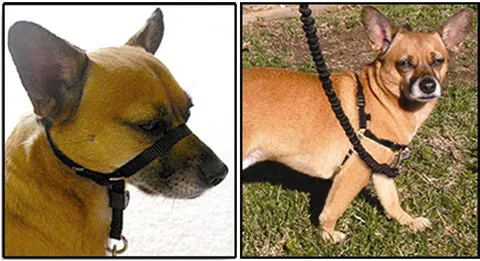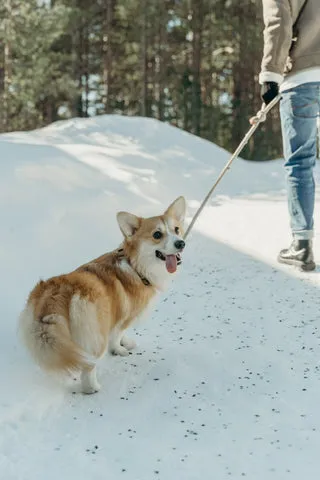The dream of a peaceful walk with your canine companion, where they stroll happily by your side, is one many dog owners share. However, the reality often involves a tug-of-war, with your dog pulling you down the street. Teaching your dog How To Get Your Dog Not To Pull While Walking is one of the most common and rewarding challenges in dog training. With patience, consistency, and the right techniques, you can transform your walks into enjoyable experiences for both you and your furry friend. This comprehensive guide will walk you through the steps to achieve that perfect loose-leash walk, strengthening your bond and making every outing a pleasure. For more specific guidance on early training, you might find tips on how to train a puppy not to pull helpful.
Pre-Training Essentials: Gear and Mindset
Before you even step out the door, selecting the right equipment can significantly impact your training success. While a standard collar is common, a front-attachment harness or a head collar can provide much-needed control for dogs that are strong pullers. A front-attachment harness redirects your dog’s forward momentum to the side when they pull, while a head collar offers maximum control, especially for powerful breeds or dogs with aggressive tendencies. Remember, these are training aids to manage pulling, not a replacement for teaching your dog the skill of walking nicely. Always use a leash no longer than 6 feet with these devices to prevent sudden impacts if your dog reaches the end abruptly.
 A small tan dog wears a head collar on the left and a front-attachment harness on the right, showcasing training gear
A small tan dog wears a head collar on the left and a front-attachment harness on the right, showcasing training gear
The “Stop and Reward” Method for Leash Pulling
At the heart of teaching your dog how to get your dog not to pull while walking is the simple yet powerful “stop and reward” method. The rule is straightforward: if your dog pulls, you stop moving. Only when the leash slackens and your dog returns to your side do you resume walking. The moment they walk politely by your side, reward them with praise and a high-value treat right by your thigh. This teaches your dog that loose-leash walking leads to progress and rewards, while pulling leads to nothing. Having a treat bag handy will make this process seamless. If your dog isn’t food-motivated, a favorite tug toy or ball can serve as a valuable reward. This method is particularly effective, even for larger breeds. For insights on managing strong pullers, check out how to train big dog to stop pulling on leash.
Step-by-Step Training to Stop Your Dog From Pulling
Mastering loose-leash walking involves a gradual progression, starting in a controlled environment and slowly introducing more distractions.
Step 1: Making Walking Beside You Rewarding
Begin your training in a familiar, low-distraction area like your backyard. Attach your dog to a long rope or a 10-20 foot leash (non-retractable) while they wear a standard harness. Prepare pea-sized pieces of high-value treats like fresh meat or cheese. Decide which side you prefer your dog to walk on (traditionally the left). Whenever your dog chooses to walk beside your preferred thigh, reward them with praise and a treat at that exact spot. If they continue walking nicely, reward them every few steps. As they improve, you can space out the rewards. If your dog seems uninterested, try again when they are a bit hungrier. Consistency in these early stages is key to building a strong foundation for future walks. If you’re also working on other skills, consider how to train your puppy to run with you alongside leash training.
Step 2: Gaining Your Dog’s Attention and Encouraging Follow-Through
Once your dog is consistently walking by your side, it’s time to teach them to pay attention to your movements. While walking in your yard, if your dog wanders off or lags behind to sniff, say “let’s go” in an upbeat voice, and immediately turn and walk in the opposite direction. You can lightly slap your thigh to get their attention initially. When your dog catches up and walks beside you, reward them generously. If the leash becomes tight and they don’t respond, stop walking and apply gentle, consistent pressure on the leash. Release the pressure and praise them the moment they start to move towards you, then reward them when they reach your side. Practice until they reliably return to your side after hearing “let’s go.”
Step 3: Establishing Authorized Sniff Breaks
Dogs need opportunities to explore and relieve themselves during walks. However, it’s crucial that you control when these breaks happen to reinforce good leash manners. During your training sessions, every 5-10 minutes, when you would typically give a food reward, instead say something like “go sniff” and allow your dog to explore or potty while on the leash. Treat this as a privilege or reward for good walking. If your dog starts pulling during this “free time,” immediately say “let’s go” and walk in the opposite direction, ending the break. When you’re ready to resume polite walking, simply say “let’s go” and continue your training.
Step 4: Shorten Leash and Introduce Challenges
As your dog becomes proficient in the backyard, gradually reduce the leash length until you’re using a standard 6-foot leash. Now, introduce variations to your walks: practice walking extra fast or slow, making sudden stops, and changing directions. Reward your dog for staying by your side through these challenges. As their proficiency grows in normal circumstances, you can begin to reward them less frequently for simply walking beside you. However, continue to offer high-value rewards when they successfully navigate challenging situations or distractions.
Transitioning to Public Walks
Once your dog performs reliably in your yard, it’s time to take your skills to the neighborhood. The techniques remain the same, but you’ll encounter a greater array of distractions: friendly strangers, squirrels, other dogs, and various sights and sounds. Consider using a front-attachment harness or head collar for additional control in these stimulating environments, and always bring your highest-value treats.
Start your walk with “let’s go.” If your dog gets distracted or pulls, revert to turning and walking in the opposite direction. Reward consistently when they walk beside you, offering extra rewards when they successfully maintain focus despite significant distractions. Consistency is paramount when teaching how to stop a Pitbull from pulling on leash or any strong-willed breed.
 A woman walks an attentive black and tan dog on a city sidewalk, demonstrating polite leash walking
A woman walks an attentive black and tan dog on a city sidewalk, demonstrating polite leash walking
Advanced Challenges and Troubleshooting
To further solidify your dog’s loose-leash skills, introduce advanced challenges. With your dog in a standard harness and on a 6-foot leash, toss a favorite ball or treat 20 feet away. If your dog pulls towards it, say “let’s go” and turn away. Only allow them to approach and retrieve the reward if they walk calmly by your side. Start with less desirable objects or longer leashes to make it easier initially.
Troubleshooting common issues:
- Crossing in front: If your dog frequently crosses in front of you, shuffle or stomp your feet slightly to make your presence more obvious and encourage them to stay on your chosen side.
- Lagging behind: If your dog lags significantly, they might be frightened or unwell. Offer encouragement rather than pulling them along. If it’s for sniffing or potty, gently keep walking while applying light leash pressure, and reward them when they catch up. For more on this, review how to properly potty train your puppy.
- Inconsistent pulling: If your dog alternates between pulling and walking nicely, stop rewarding them for simply returning after a pull. Instead, focus on rewarding a larger number of consecutive steps taken politely by your side.
 A small white and brown dog on a leash in a snowy park, demonstrating a calm outdoor walk
A small white and brown dog on a leash in a snowy park, demonstrating a calm outdoor walk
Introducing the “Heel” Command for Close Control
The “heel” command is useful for short periods when you need your dog to walk very close and be highly attentive to you, such as passing other animals or navigating crowded areas. Start practicing “heel” indoors. Hold a treat in your closed fist, let your dog sniff it, then say “heel” and take a couple of steps, leading them along with your fist near your thigh. Praise and reward when they follow your fist with their nose. Gradually transition to using an empty fist as a hand signal, continuing to praise and reward for every few steps they heel. Increase your standards with each session, eventually practicing outdoors and in more distracting environments.
Conclusion
Teaching your dog how to get your dog not to pull while walking is a journey that requires patience, consistency, and positive reinforcement. By understanding the core principles, implementing a step-by-step training approach, and gradually introducing challenges, you can transform frustrating walks into joyful experiences. Remember to use appropriate gear, high-value rewards, and maintain a calm, encouraging demeanor. With dedication, you and your dog will soon enjoy harmonious loose-leash walks, strengthening your bond and making every outing a pleasure. Practice these techniques regularly, and you’ll not only enhance your dog’s manners but also deepen your connection.
